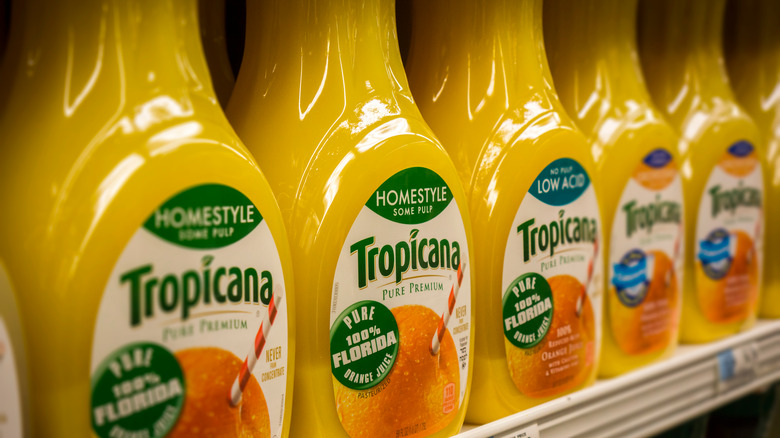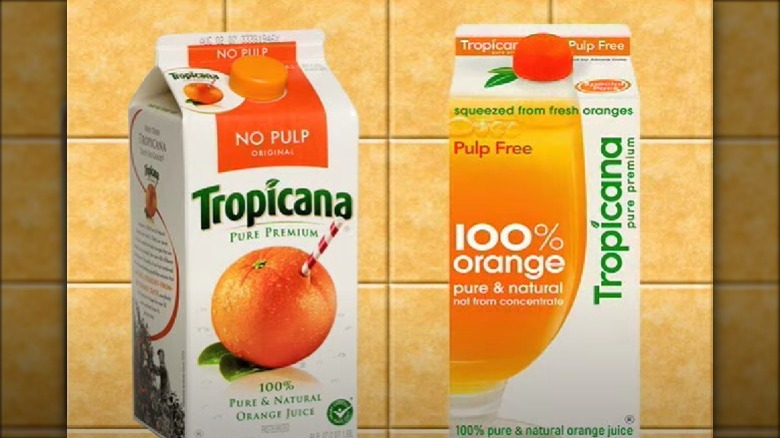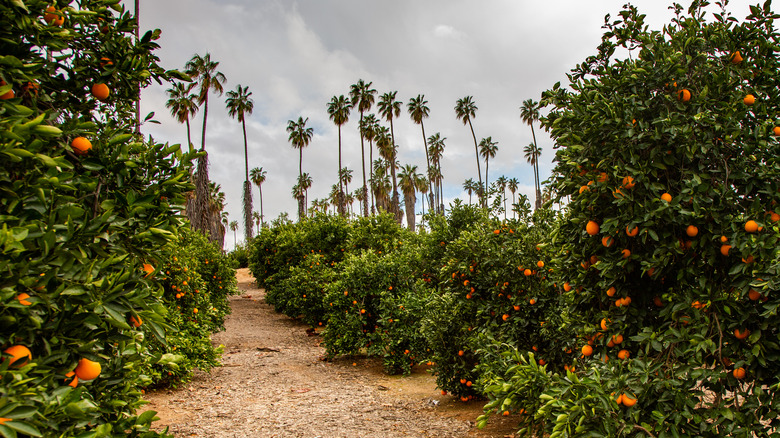Tropicana's Rebrand Attempt Was A Complete Disaster
One way that major food brands stay relevant is through a rebranding effort and sometimes things fail to go as planned. It can be hard to predict the response consumers will have to change. Popular orange juice brand Tropicana found that out the hard way when its 2009 Tropicana rebrand attempt ended up as a complete disaster that was quickly swept under the rug.
According to Crème de Mint, Tropicana spent $35 million with the now defunct Arnell Advertising in 2009 for its rebrand effort and went on to lose $20 million in sales in just one month. The brand attempted to replace its iconic and relatable orange juice carton with a minimalistic photo of an orange juice glass and made changes to its logo, both of which failed to produce new business. The brand had decades of relevance with consumers, being founded in 1947 in Florida, that was suddenly threatened.
Consumers push back on Tropicana changes
The situation became dire enough that customers began complaining about the rebrand of the iconic Tropicana look on social networks, in letters, and via phone calls. According to The New York Times, customers described the rebrand as "ugly," "stupid," and resembling "a generic store brand." One email went as far as to say, "Do any of these package-design people actually shop for orange juice?"
The loud pushback is a display of shocked emotions for consumers. Change can be scary for brands and consumers. Claudia Townsend, an associate professor of marketing at the University of Miami Patti and Allan Herbert Business School, explained, "Consumers are often fiercely loyal to their favorite products, and even when they may support a branding change, there's always backlash when a company changes an asset." Companies should expect some form of pushback, but it appeared that Tropicana was unprepared for the reaction to its 2009 brand change.
The inevitable public apology from Tropicana
The ultimate display of a disaster is when an executive of a company is forced to apologize and make public admissions of error. Statements tend to come after weeks or months of public chatter or media attention harming a brand. The reversal and apology did not take long for Tropicana and happened just weeks after the packaging change.
Neil Campbell, president of Tropicana North America, told The New York Times in January 2009, "The straw and orange have been there for a long time, but people have not necessarily had a huge connection to them." However, after all the complaints from Tropicana's "loyal customers," Campbell changed his tune in an interview one month later. "Those consumers are very important to us, so we responded. What we didn't get was the passion this very loyal small group of consumers have. That wasn't something that came out in the research."
The straw and orange design continues to be used today in branding for Tropicana orange juice, proving that sometimes, "If it ain't broke, don't fix it."


